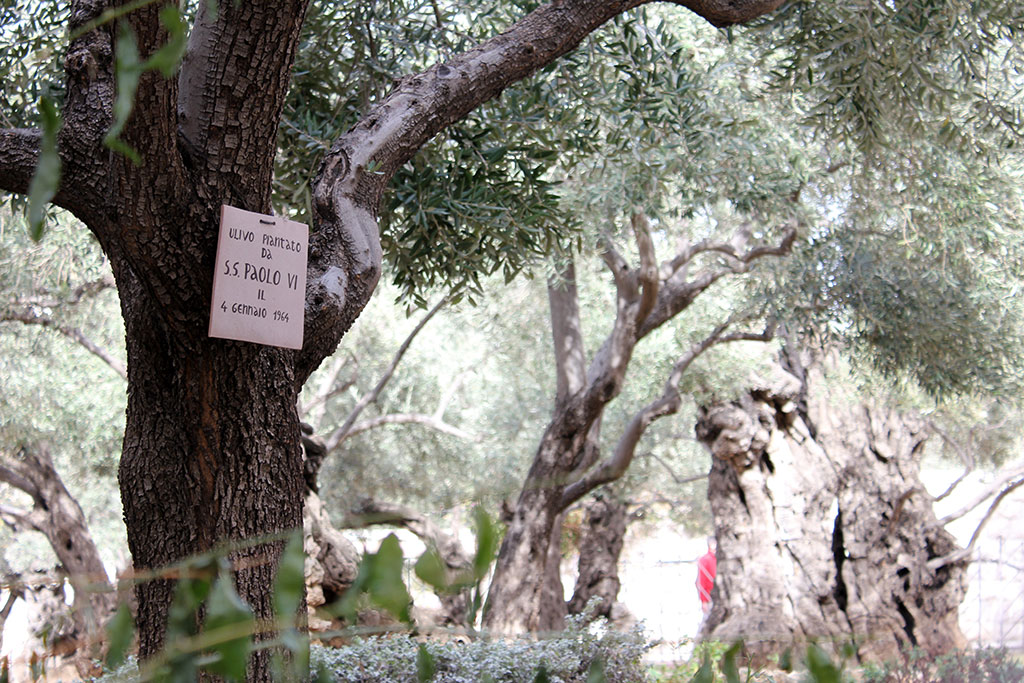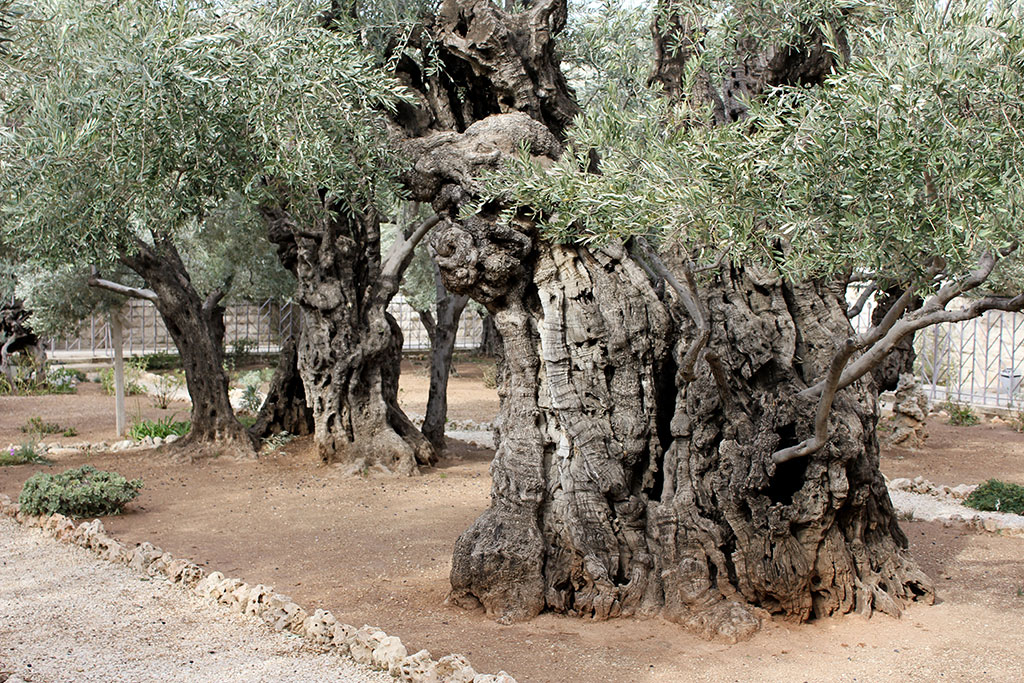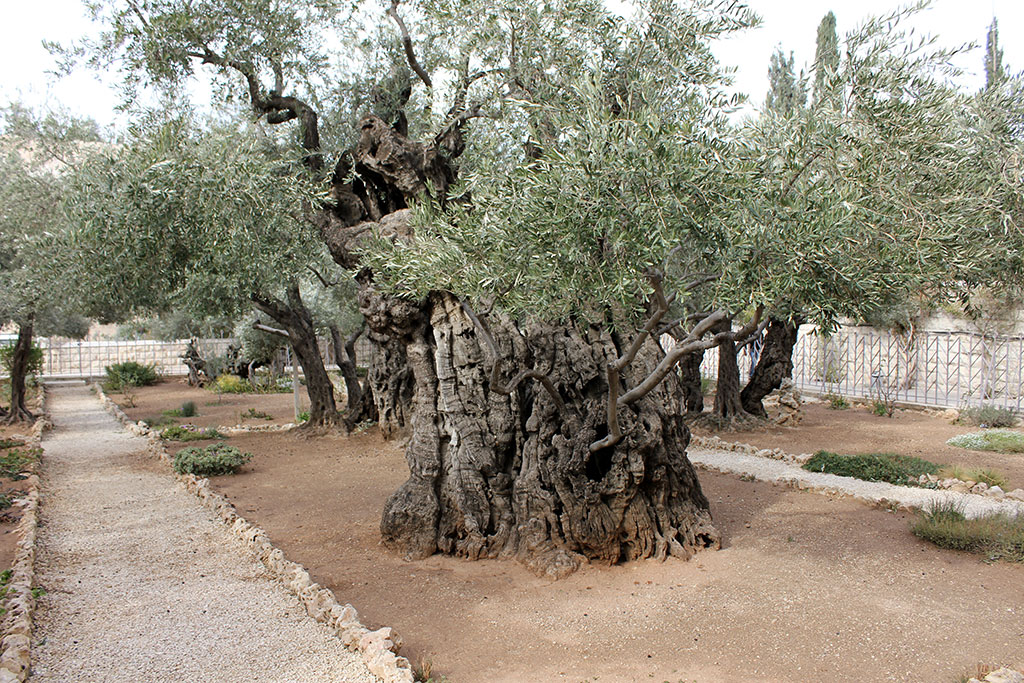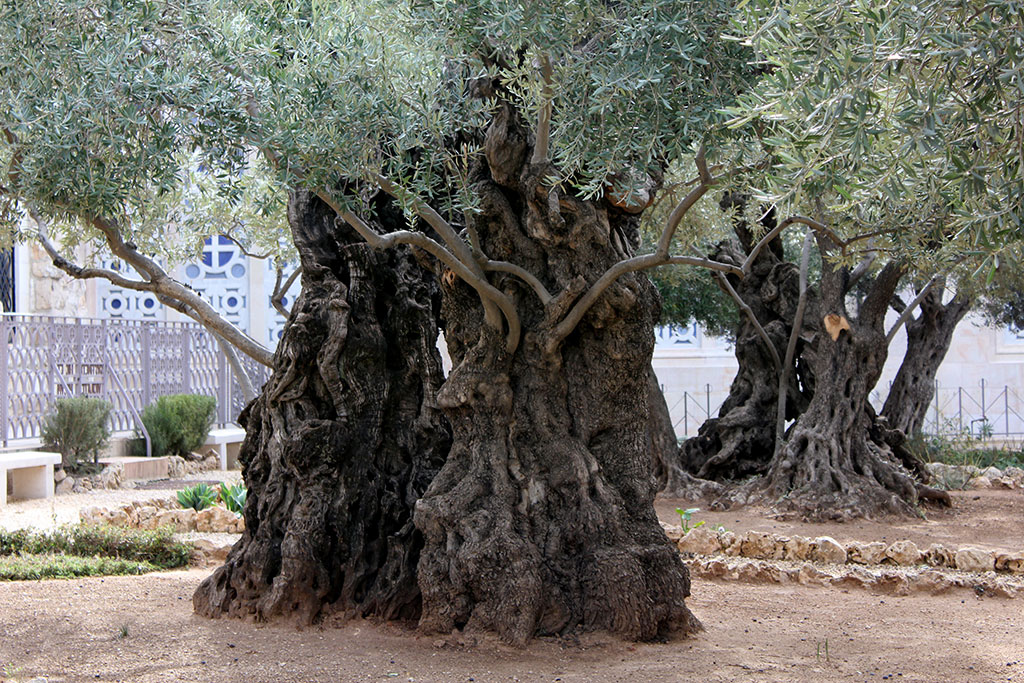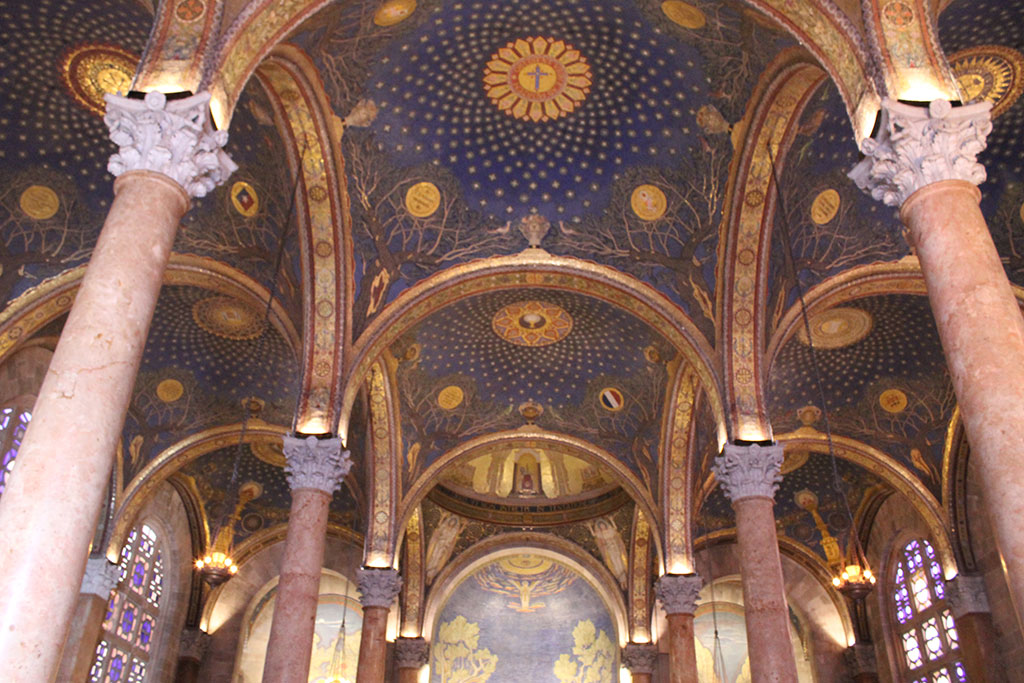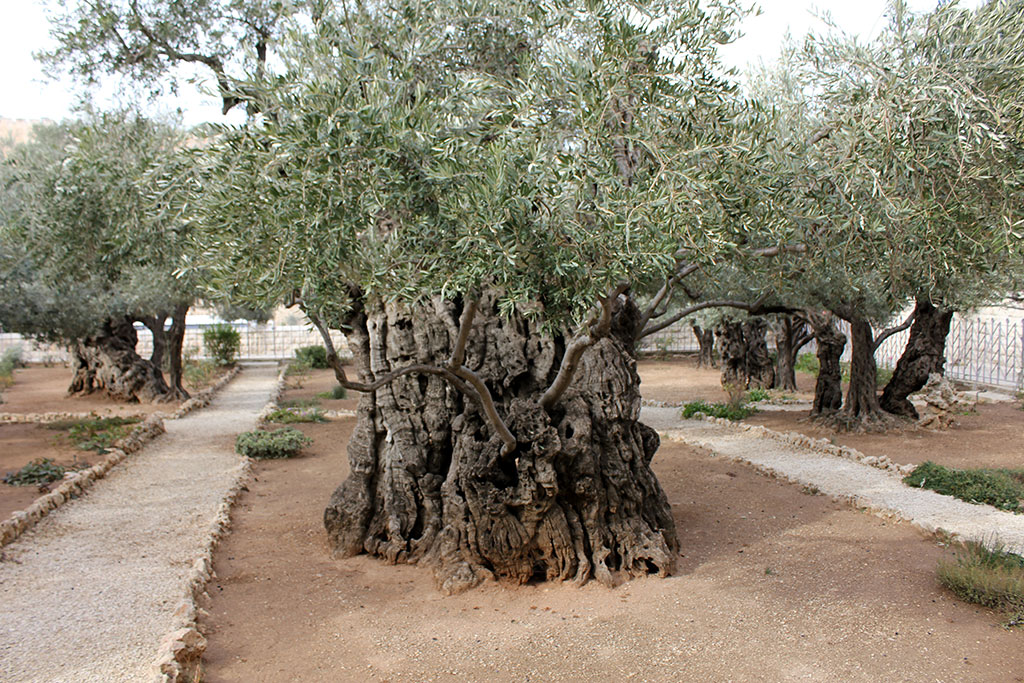Dominus Flevit is a small catholic chapel on the Mount of Olives in Jerusalem, located opposite the Jerusalem Old City walls.
The small church was designed and constructed between 1953 and 1955 by the famous Italian architect Antonio Barluzzi and is held in trust and administered by the Franciscan Custody of the Holy Land.
During the Dominus Flevit construction, archaeologists uncovered many finds dating back from the Canaanite period until the roman era, as well as tombs from the Second Temple and Byzantine period.
Dominus Flevit has a most beautiful panoramic view to the Old City of Jerusalem, it is exactly in front of the Golden Gate and Golden Dome.
The name Dominus Flevit, which translates from Latin as "The Lord Wept", was projected in the form of a teardrop to symbolize the tears of Jesus.
Here, according to the book of Luke chapter 19th, Jesus, while riding toward the city of Jerusalem, becomes overwhelmed by the beauty of the Second Temple and prophesied its future destruction and the diaspora of the Israeli people. Luke 19:37-42
Then, as He was now drawing near the descent of the Mount of Olives, the whole multitude of the disciples began to rejoice and praise God with a loud voice for all the mighty works they had seen, saying: ‘Blessed is the King who comes in the name of the LORD!’ Peace in heaven and glory in the highest! And some of the Pharisees called to Him from the crowd, “Teacher, rebuke Your disciples. But He answered and said to them, “I tell you that if these should keep silent, the stones would immediately cry out. Now as He drew near, He saw the city and wept over it, saying, If you had known, even you, especially in this your day, the things that make for your peace! But now they are hidden from your eyes.
Luke 19:37–42 NKJV

In 1874 C. Clermont-Ganneau reported the discovery of burials that yielded the names Mary, Martha, and Eleazar (Lazarus). Between 1953 and 1955 B. Bagatti conduct ed excavations on the grounds of Dominus Flevit (“The Lord Wept”) on the slopes of the Mount of Olives. He recovered forty-three inscriptions with many of the same names as are found in the NT. Many of these names, however, are quite common: Simon occurs thirty-two times, Joseph twenty-one times, Mary eighteen times, Martha eleven times, etc.
Though many of the ossuaries bear cross marks, this does not demonstrate that these are Christian burials, inasmuch as clearly Jewish ossuaries, e.g., that of Nicanor, also bear such marks. The cross on Jewish ossuaries may represent the letter Taw (cf. Ezek 9:4) as a mark of those faithful to the Lord.
But in one case from Dominus Flevit what is inscribed seems to be the Chi-Rho symbol for “Christ” or “Christian.” Inscribed on another is a monogram of the Greek letters Iota, Chi, and Beta, standing perhaps for “Iesous Christos Boethia “ (“Help!”).
Two ossuary inscriptions discovered in Talpioth, a southern suburb of Jerusalem, were called the “earliest records of Christianity” by Sukenik.50 A coin of Agrippa I and pottery indicate that the ossuaries belong to the period before A.D. 50. The two ossuaries bear the enigmatic inscriptions in Greek: IESOU IOU and IESOU ALOTH. These were interpreted by Sukenik as cries of lamentation addressed to Jesus. Kane, on the other hand, interprets these as simple personal names.51 He does concede the possibility that the ossuary of Alexander of Cyrene, son of Simon, may be that of the son of the man who carried Jesus’ cross (Mark 15:21).






